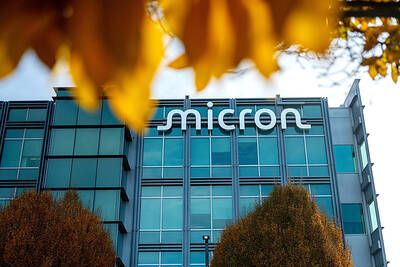With 5G services entering their third year, Far EasTone Telecommunications Co (遠傳電信) is aiming to boost its 5G subscriber penetration rate to 40 percent this year from more than 30 percent last year.
It would be reasonable to see an increase of 10 percentage points this year, Far EasTone president Chee Ching (井琪) said on Wednesday.
Benefiting from an expansion of its 5G subscriber base, the company’s net profit and revenue would grow this year more than last year, Ching said, adding that more 5G subscriptions would constitute one of the key drivers of the growth.

Photo: CNA
Far EasTone has posted a 20 percent increase in average revenue per user (ARPU) from 5G subscribers’ renewals in terms of monthly fees, it said.
The telecom saw its ARPU climb to NT$724 (US$24) from post-paid mobile users in the third quarter of last year, from NT$719 in the second quarter and NT$708 in the third quarter of 2021.
As telecom services have become an integral part of people’s life, Far EasTone’s business would be less affected by the downturn in the economy, compared with consumer electronics companies, Ching said.
“People may cut spending on nonessential items when paychecks shrink, but it is unlikely that they would cancel their telecom services,” she said.
Far EasTone expects capital spending to be lower than last year’s NT$11.1 billion as investment on 5G deployment has peaked, Ching said.
The company also expects revenue from its “new economy” businesses, or nontraditional telecom services, including cloud-based services, 5G private networks and e-commerce services, to rise to 20 percent of total revenue this year, from 19 percent in the first three quarters of last year.
Asked about Far EasTone’s planned acquisition of Asia Pacific Telecom Co (亞太電信), Ching said she expected the merger to take effect in the third quarter at the earliest.
The acquisition is still under review by the National Communications Commission and is subject to the approval of the Fair Trade Commission.
Far EasTone expects the deal to generate synergies within a year.

GROWING OWINGS: While Luxembourg and China swapped the top three spots, the US continued to be the largest exposure for Taiwan for the 41st consecutive quarter The US remained the largest debtor nation to Taiwan’s banking sector for the 41st consecutive quarter at the end of September, after local banks’ exposure to the US market rose more than 2 percent from three months earlier, the central bank said. Exposure to the US increased to US$198.896 billion, up US$4.026 billion, or 2.07 percent, from US$194.87 billion in the previous quarter, data released by the central bank showed on Friday. Of the increase, about US$1.4 billion came from banks’ investments in securitized products and interbank loans in the US, while another US$2.6 billion stemmed from trust assets, including mutual funds,

Micron Memory Taiwan Co (台灣美光), a subsidiary of US memorychip maker Micron Technology Inc, has been granted a NT$4.7 billion (US$149.5 million) subsidy under the Ministry of Economic Affairs A+ Corporate Innovation and R&D Enhancement program, the ministry said yesterday. The US memorychip maker’s program aims to back the development of high-performance and high-bandwidth memory chips with a total budget of NT$11.75 billion, the ministry said. Aside from the government funding, Micron is to inject the remaining investment of NT$7.06 billion as the company applied to participate the government’s Global Innovation Partnership Program to deepen technology cooperation, a ministry official told the

AI TALENT: No financial details were released about the deal, in which top Groq executives, including its CEO, would join Nvidia to help advance the technology Nvidia Corp has agreed to a licensing deal with artificial intelligence (AI) start-up Groq, furthering its investments in companies connected to the AI boom and gaining the right to add a new type of technology to its products. The world’s largest publicly traded company has paid for the right to use Groq’s technology and is to integrate its chip design into future products. Some of the start-up’s executives are leaving to join Nvidia to help with that effort, the companies said. Groq would continue as an independent company with a new chief executive, it said on Wednesday in a post on its Web

Taiwan Semiconductor Manufacturing Co (TSMC, 台積電), the world’s leading advanced chipmaker, officially began volume production of its 2-nanometer chips in the fourth quarter of this year, according to a recent update on the company’s Web site. The low-key announcement confirms that TSMC, the go-to chipmaker for artificial intelligence (AI) hardware providers Nvidia Corp and iPhone maker Apple Inc, met its original roadmap for the next-generation technology. Production is currently centered at Fab 22 in Kaohsiung, utilizing the company’s first-generation nanosheet transistor technology. The new architecture achieves “full-node strides in performance and power consumption,” TSMC said. The company described the 2nm process as